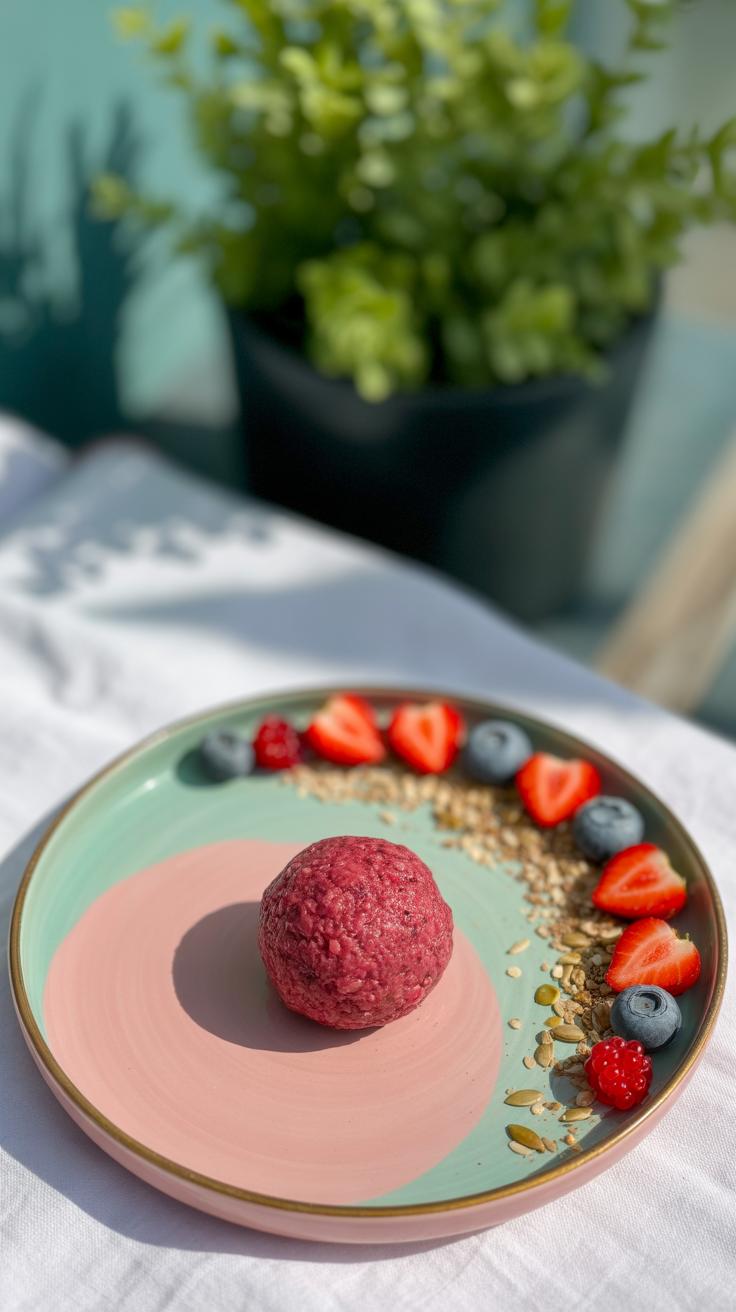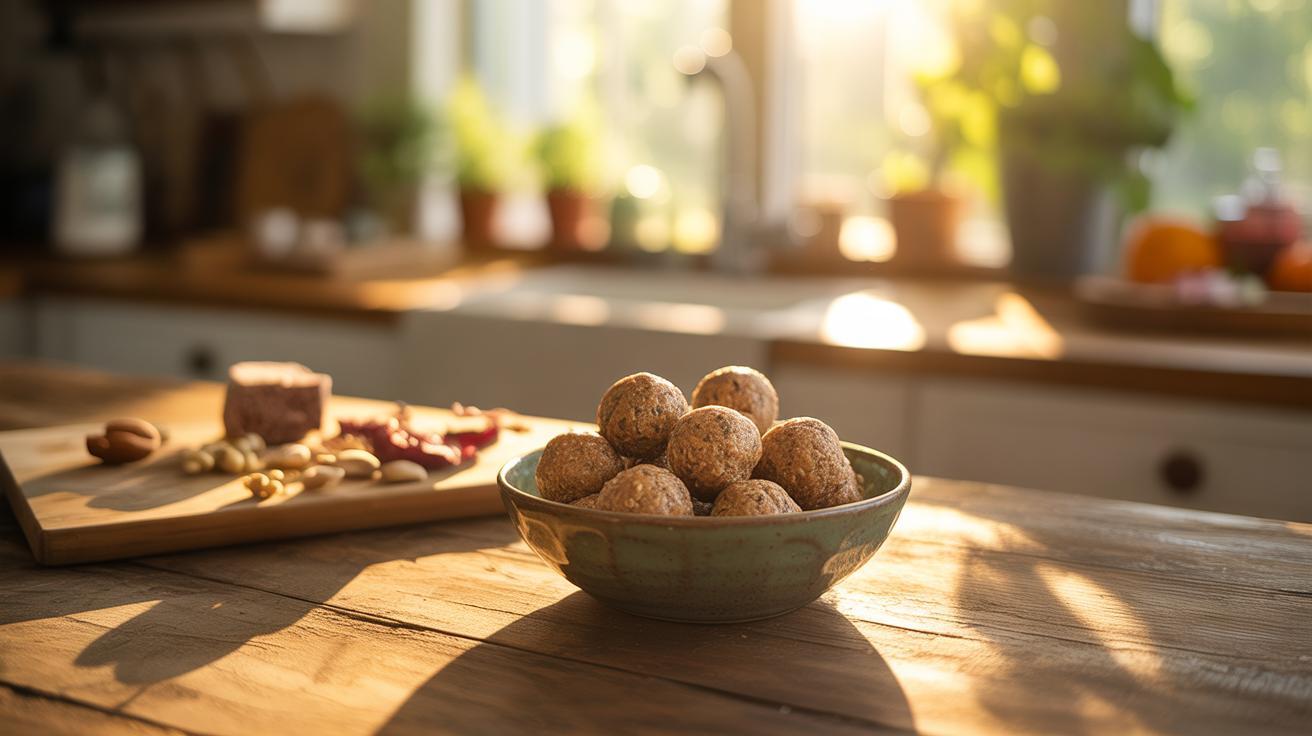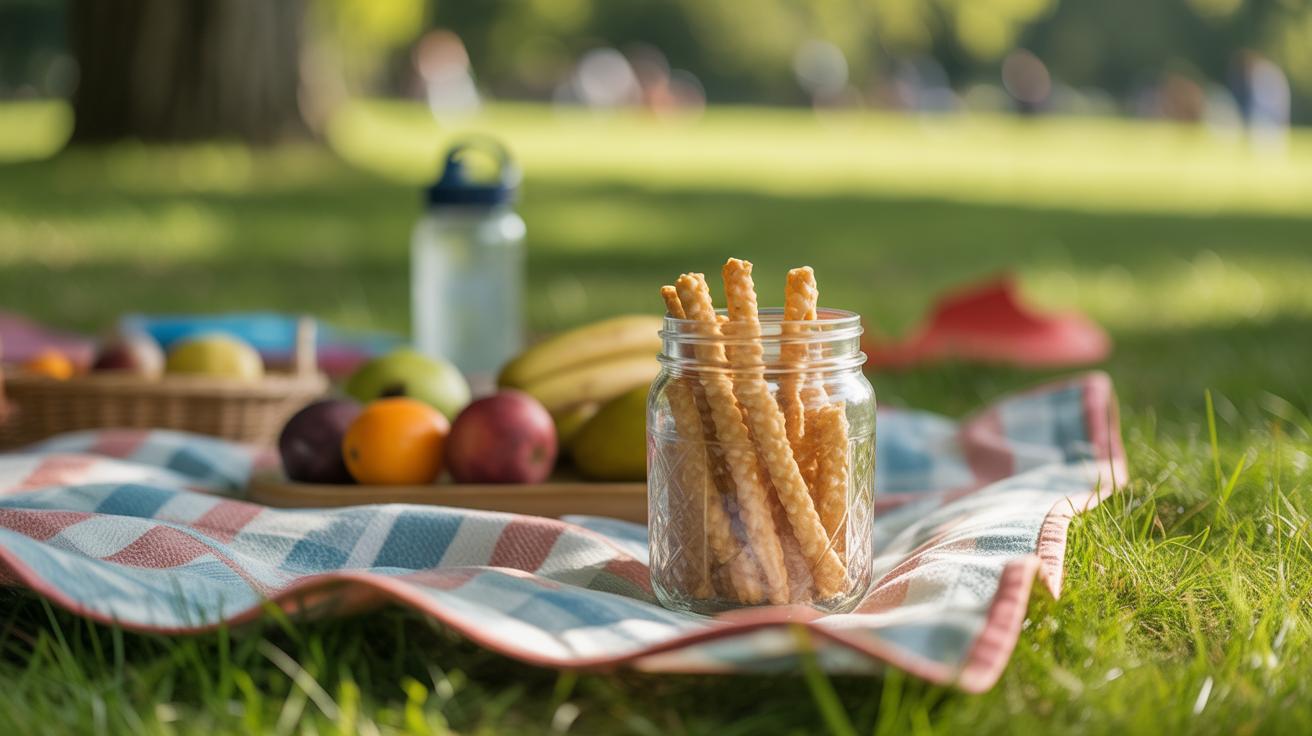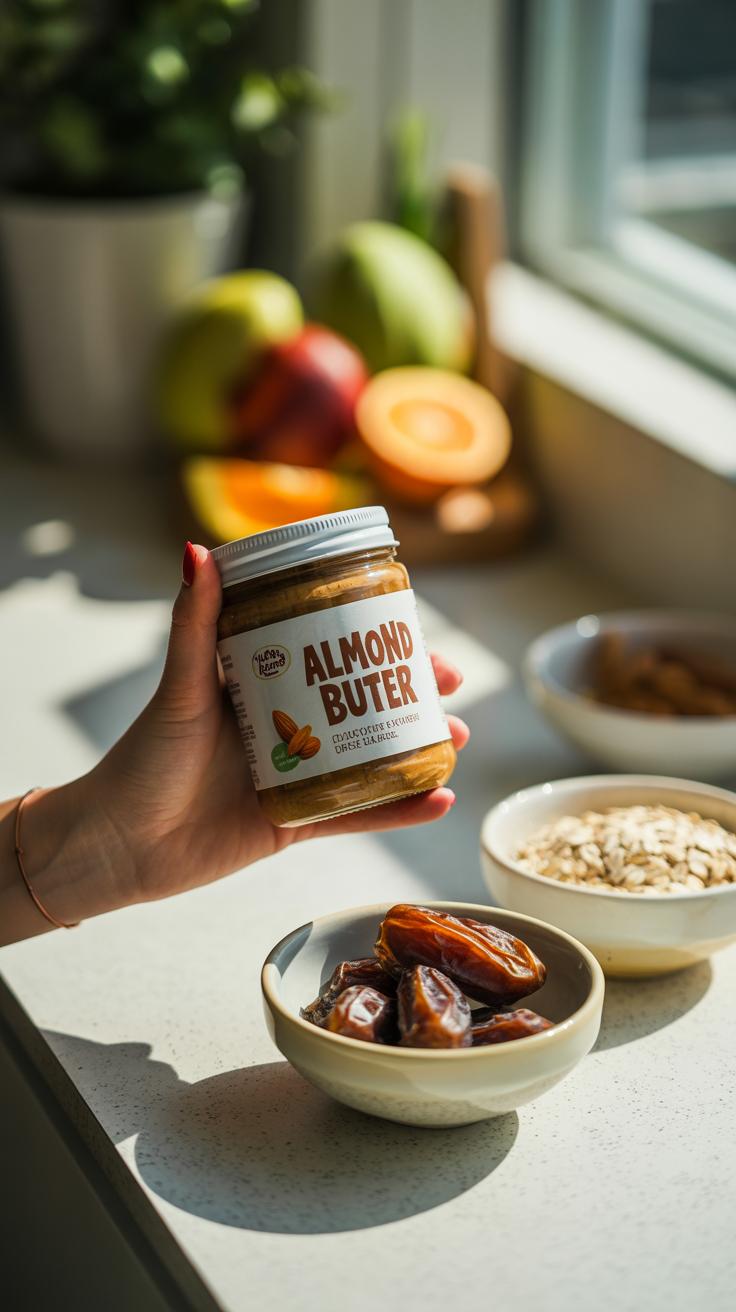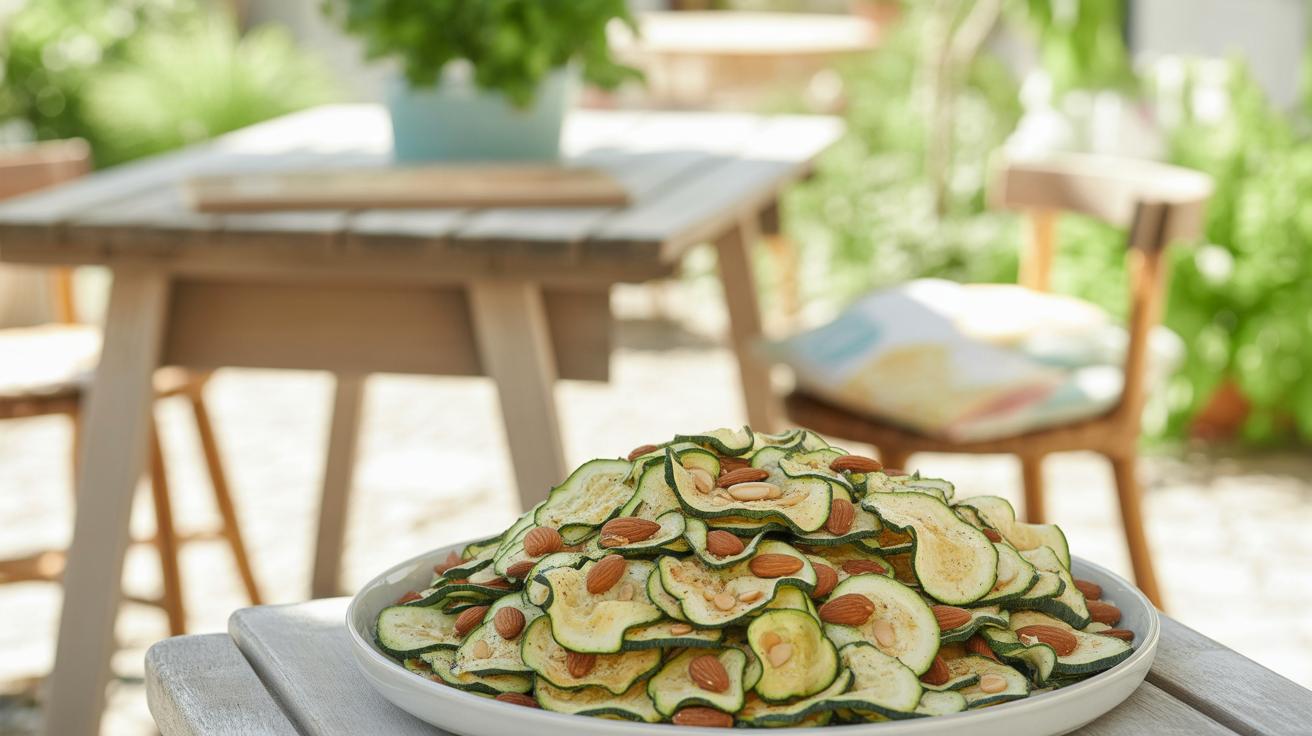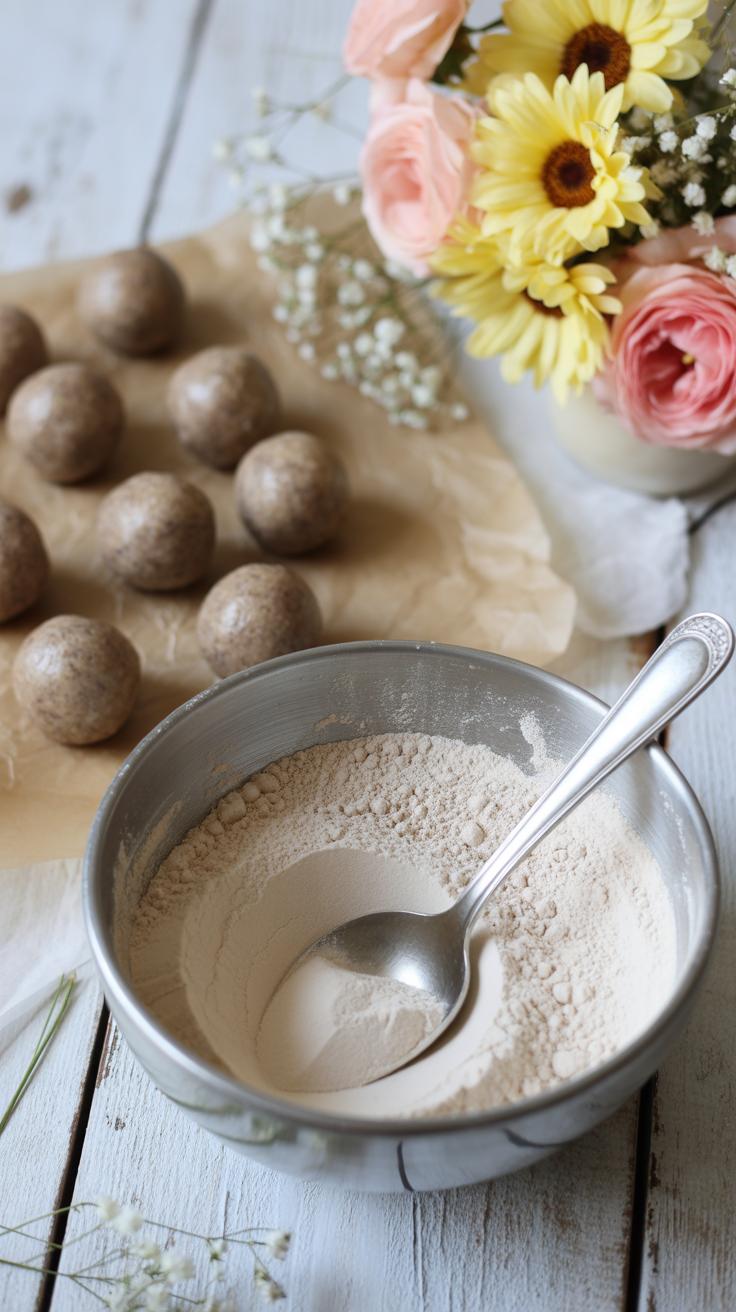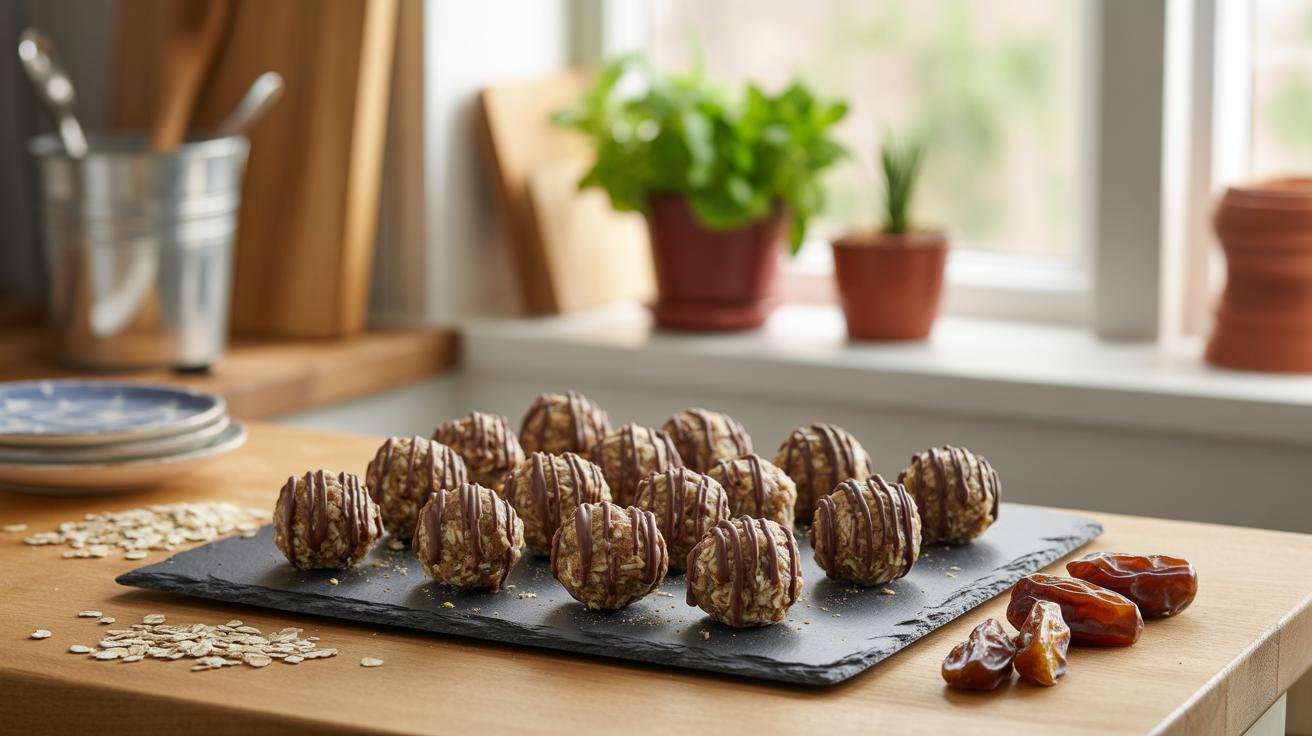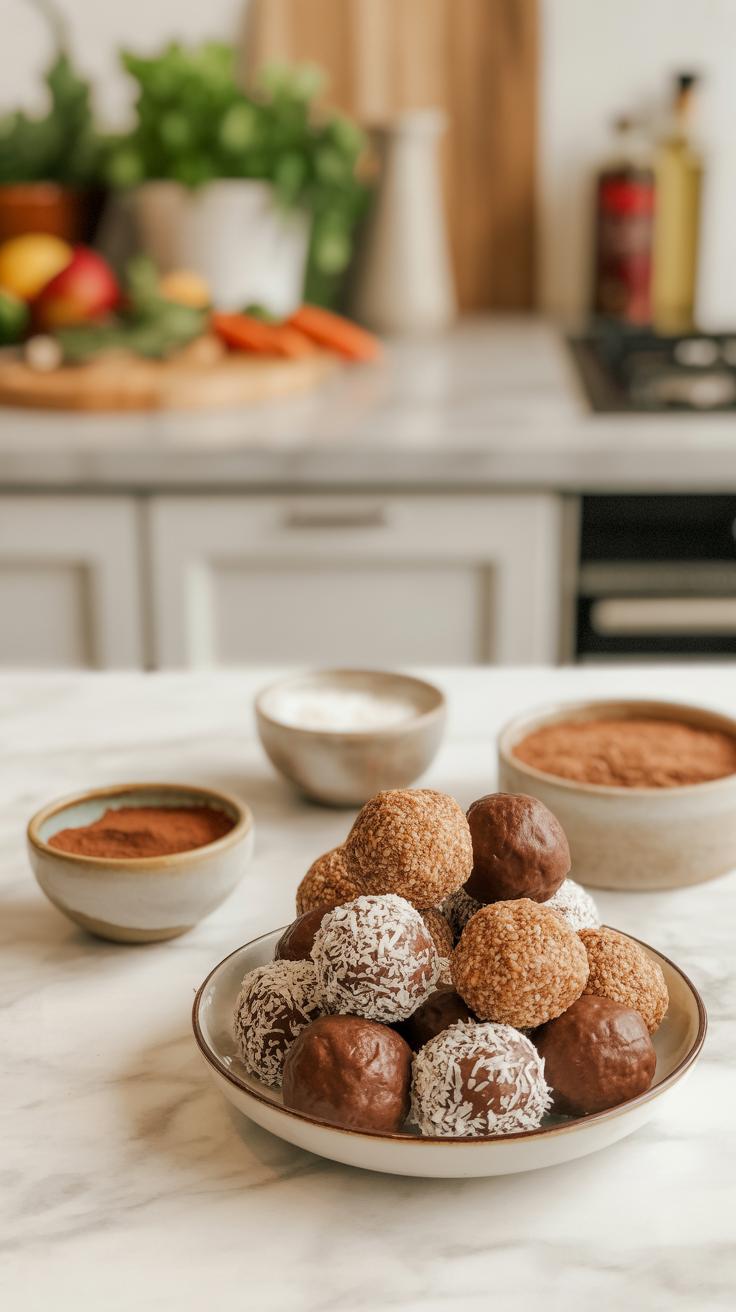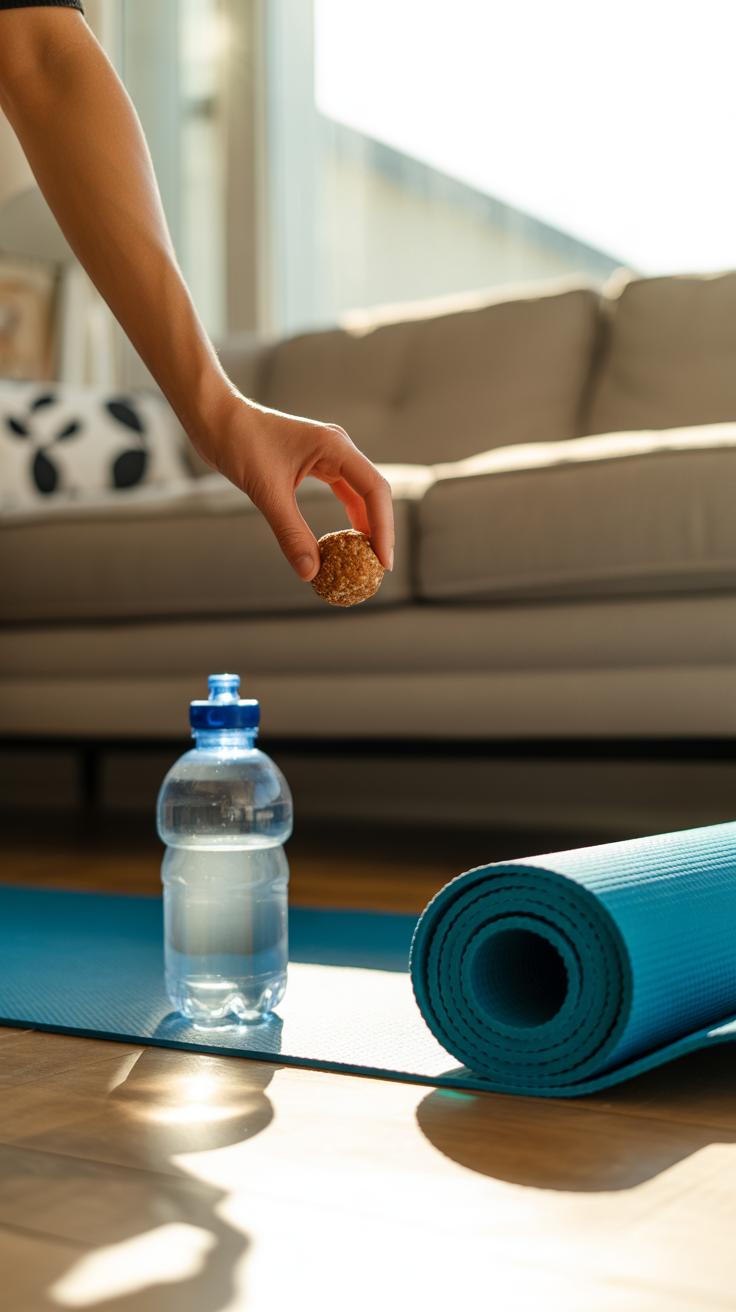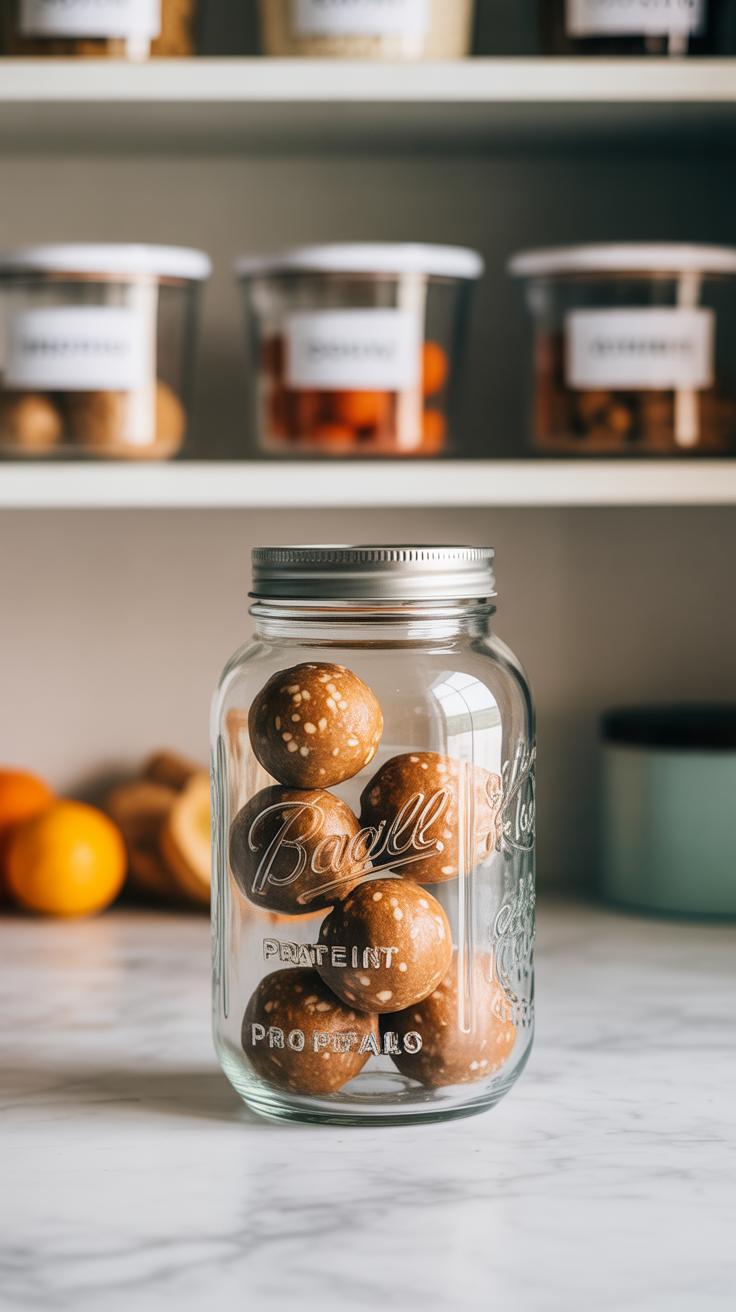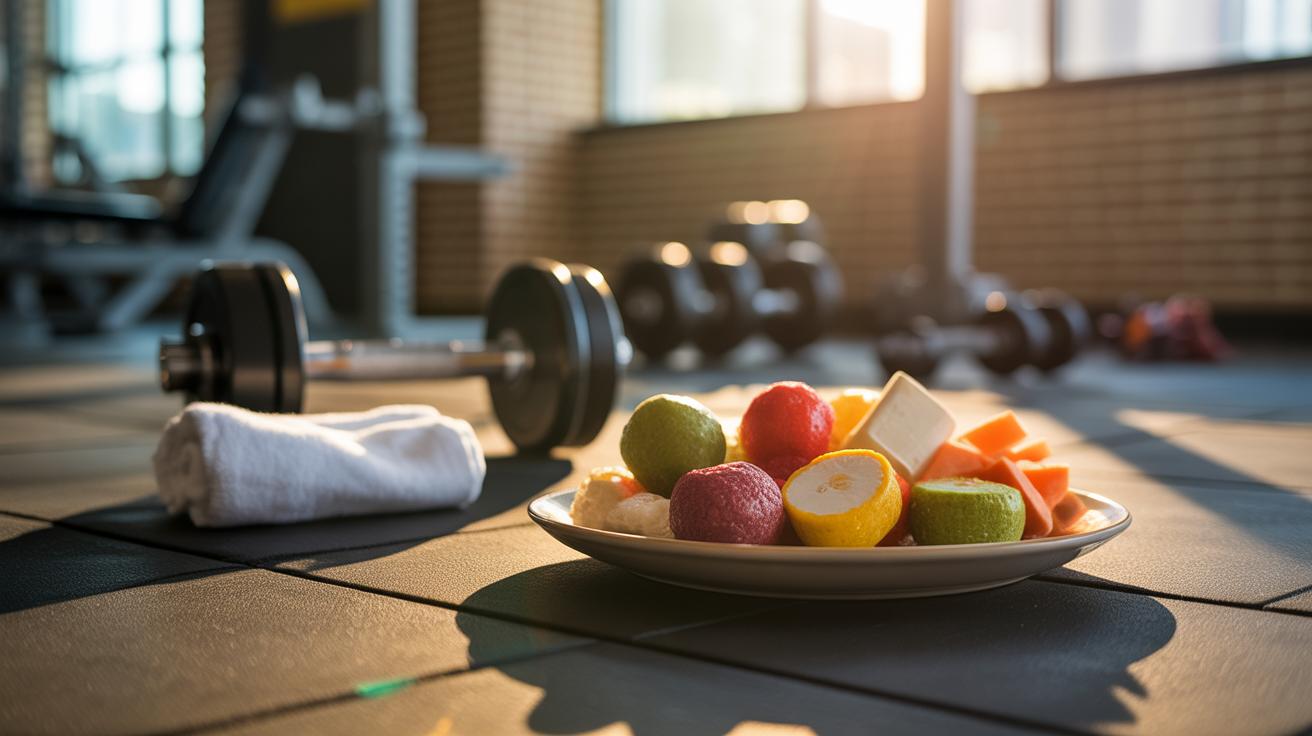Introduction
Protein balls have become a favorite snack for many looking to eat healthy while enjoying something tasty. This ultimate guide explores what protein balls are, why they are considered healthy, and how they can fit into your diet. You will learn about their nutritional benefits and how these small bites can provide big energy.
Whether you are new to protein balls or want to improve your recipes, this guide will help you understand the key ingredients, health benefits, and ways to make your own protein balls at home. Get ready to discover simple tips to keep your snacks both healthy and delicious.
Protein Balls Healthy
You might wonder what actually makes protein balls a healthy choice. It’s not just their protein content, though that’s a big part of it. The mix of nutrients you get from these little snacks can have a real impact on your energy and wellbeing throughout the day. For example, the combination of protein, fiber, and healthy fats tends to keep hunger at bay longer than a sugary snack might. It’s that slow-burning energy that often catches people off guard.
Think about how your body processes these ingredients: protein supports muscle repair and growth, which is crucial if you’re active, but don’t confuse muscle-building with excessive bulk — it’s more about maintenance and recovery. Fiber, on the other hand, slows digestion and helps regulate blood sugar. This might seem minor, but stabilizing your blood sugar could be key if you experience energy crashes or mood dips.
Then, there are the healthy fats from nuts and seeds. They’re often overlooked because fats carry a bad reputation, but these fats actually support your brain and heart health, and they can even reduce inflammation. Still, the balance here matters—you don’t want a protein ball that’s so dense with fat it feels more like a dessert than a snack.
What’s also interesting is how protein balls fit into different lifestyles. Are they just for gym-goers, or can anyone benefit? Well, I’ve found myself grabbing one during hectic workdays or long hikes, simply because they’re quick and satisfying. Sometimes I wonder if their appeal is partly psychological too — they feel like a treat but are genuinely nourishing. You might have had that feeling too, where you realize the snack you reached for actually helped you push through a slump rather than just masking it.
So, while protein balls do pack a nutritional punch, the real question might be: how do they fit into your daily routine and overall health goals? There’s no one-size-fits-all answer, but they can be a flexible, convenient addition—or sometimes a replacement for less wholesome options. Still, it’s probably wise to keep portions reasonable and pay attention to the ingredients so that “healthy” doesn’t just mean “calorie-dense.”
Health Benefits of Protein Balls
Protein for Muscle and Energy
You might already know that protein is essential for muscle repair, but protein balls deliver this in a simple, convenient way. When you eat protein balls, the protein helps rebuild muscle tissue torn during exercise or daily activities, which can reduce soreness and speed up recovery. But that’s not all—protein also acts like a steady fuel source. Unlike sugar or simple carbs, protein digests slowly, giving you a more lasting energy boost. That slow release can keep you going through a busy morning or an afternoon slump without the crash that other snacks might cause.
What I’ve found from personal experience is that having a protein ball before a workout helps me stay energized longer than just having fruit or coffee. Of course, everyone’s different, but the muscle and energy benefits are generally reliable.
Nutritional Value From Other Ingredients
Protein balls often include nuts, seeds, and dried fruits, and these are more than just fillers—they add a bunch of nutrients that contribute to your overall health. Nuts and seeds bring healthy fats, which support brain function and heart health. Plus, their fiber can slow digestion even further, helping you feel full and stable for hours.
Dried fruits lend natural sweetness and pack vitamins like B-complex and minerals such as iron and potassium. These nutrients are small but essential players in energy metabolism and muscle function. Plus, fiber from fruits and nuts supports digestion, which may sometimes get overlooked but is really important.
So, when you’re grabbing a protein ball, you’re not just eating protein. You’re getting a mix of healthy fats, essential vitamins, minerals, and fiber. It’s almost like a mini multivitamin you can eat, but tastier. At least, that’s how I think about it when I snack on these little bites.
Choosing Healthy Ingredients
Guide on selecting the healthiest ingredients for protein balls
When you pick ingredients for your protein balls, aim for whole, natural foods. Think nuts, seeds, dried fruits without additives, and plain oats. These basics bring fiber, vitamins, and minerals—not just empty calories. Some might overlook how even small processed ingredients can sneak in unwanted chemicals or reduce nutrient quality. For example, roasted nuts are fine, but heavily salted or sugary ones often aren’t. Freshness matters too; older nuts may turn rancid, impacting both health and taste.
It’s tempting to grab whatever’s convenient, but choosing unrefined components usually pays off in better energy and digestion. You might find yourself wanting to experiment with almond butter over a store-bought spread or swapping chocolate chips for cocoa nibs. These swaps can change the texture and flavor, but they rid the recipe of unnecessary additives.
Avoiding Added Sugars and Unhealthy Fats
Added sugars are everywhere and easy to underestimate. Protein balls can quickly turn from wholesome snacks to sugar bombs if recipes lean on things like corn syrup or refined sugar. That spike in energy is often followed by a crash, counteracting the slow, steady boost you’re aiming for.
Similarly, some fats aren’t created equal. Trans fats or hydrogenated oils, commonly found in processed snacks, don’t belong in your protein balls. They don’t support heart health and can add unnatural heaviness to your snack.
Choosing natural fats like those from nuts, seeds, or coconut oil can keep protein balls satisfying without compromising nutrition. It can take a few tries to find the right balance, but cutting out unnecessary sugars and bad fats usually makes each bite feel lighter and more nourishing.
Best Protein and Sweetener Choices
Quality protein powders vary a lot. Whey is popular and well absorbed, but if you’re dairy-sensitive or vegan, options like pea, hemp, or brown rice protein are worth exploring. These plant-based powders tend to bring extra fiber or minerals alongside protein, which is a nice bonus.
When it comes to sweeteners, simple choices like honey or mashed dates often work best. They add natural sweetness and a bit of texture. Some might hesitate—concerned about calories or sugar content—but I’ve found these natural sweeteners don’t cause the jittery feeling that processed sugar can.
Using small amounts lets you keep flavor without overloading on sugars. Plus, dates provide potassium and iron, which you wouldn’t get from plain sugar. Balancing taste and health feels like a bit of an art, but it’s worth experimenting until the mix feels right for you.
Simple Homemade Protein Ball Recipes
Making protein balls at home is easier than you might think. With just a handful of ingredients like oats, nut butter, protein powder, and small additions such as honey or dried fruit, you can whip up a batch in minutes. Often, I start with a base of rolled oats and peanut butter because they bind well and taste familiar. You can toss in chia seeds or flaxseeds for some extra fiber if you’re feeling experimental.
Try mixing these, roll them into bite-size balls, and chill for a bit. Simple, right? What’s fun is that these recipes rarely require precise measurements. It’s more about the feel—sticky enough to hold, not too wet to fall apart. Maybe you’ll find your own version that suits your texture preference better than mine. That’s the beauty here.
No-Bake Protein Balls
No-bake protein balls are perfect if you’re short on time or want to avoid heating anything up. Typically, you combine dry ingredients like oats and protein powder with wet ones like nut butter and a natural sweetener, then mix until you get a dough-like consistency.
Here’s a simple approach:
- Mix 1 cup oats with ½ cup nut butter.
- Add ¼ cup protein powder and 2 tablespoons honey or maple syrup.
- Optionally, fold in mini chocolate chips or chopped nuts.
- Roll into balls and refrigerate for 30 minutes.
You’ll notice these stay soft and chewy, which some prefer, especially if you like that raw edge. I was surprised how satisfying they can be without cooking. The flavor feels fresher—less toasted, so the ingredients shine through differently.
Baked Protein Ball Variations
Now, baked protein balls are a different story. Baking changes their texture entirely—you get a firmer exterior and a slightly drier interior. I find this useful when you want them to last longer in your bag without getting squished.
To try baking, prepare your usual mix but add a beaten egg or replace some nut butter with mashed banana to help with binding during heating. Bake at 350°F (about 175°C) for 10-15 minutes, but watch closely; they dry out quickly.
Baked versions tend to have a nuttier, toasted flavor. Though I sometimes miss the softness of no-bake balls after baking, the chewiness adds a certain appeal, especially if you prefer a snack closer to a cookie in texture. It makes you think—should protein balls always be raw, or can they be a little more substantial?
Customizing Protein Balls to Your Taste
Protein balls don’t have to be one-size-fits-all. You can tweak them in so many ways to match what you like, or even what your body needs that day. Sometimes I find myself wanting a crunchier bite, while other times something softer with a hint of sweetness works better. It depends.
Start with the basics, then think about textures. Adding chopped nuts or seeds will give a satisfying crunch. Flaxseeds or chia seeds blend in well and subtly boost fiber. If you want some chewiness, toss in dried fruits like raisins, cranberries, or chopped dates. They also add natural sugars, so you might want to cut back a bit on other sweeteners.
Spices and flavorings can change the whole experience. Cocoa powder brings a rich, almost bitter chocolate taste. Cinnamon lends warmth and depth without sweetness. Vanilla extract smooths everything out and ties flavors together nicely. You might even experiment with a pinch of sea salt to brighten the overall taste—it’s surprising how well that works.
Don’t be shy about adjusting ingredients in small amounts first. It’s easy to add more spices or fruit, but tough to fix a mix that’s too intense or overly sweet. Keep notes of what you try; it’s worth knowing what worked and what felt off. After a few tries, you’ll find your favorite balance between flavor, texture, and nutrition.
When and How to Eat Protein Balls
Snacks Between Meals
Protein balls can be just the right answer when hunger strikes mid-morning or afternoon. They provide a decent balance of protein, fats, and some carbs, which helps keep you feeling full longer than many typical snacks. You know that sluggish feeling when your energy dips before lunch or dinner? A protein ball can help bridge that gap without tipping your calorie budget too far.
Eating one or two between meals usually does the trick, but it depends on your activity level and overall diet. If you find yourself reaching for something sugary or carb-heavy, maybe try a protein ball instead and see if your energy stays more steady. It’s something I’ve tested on busy workdays—snacking on a protein ball helped me avoid the usual afternoon slump without feeling stuffed.
Post-Workout Nutrition
After exercise, your muscles need fuel to recover and rebuild. Protein balls offer a convenient way to deliver some protein quickly along with a bit of healthy fat and carbs. This mix can be helpful, especially if you don’t have time for a full meal right away. Depending on how intense your workout was, one or two protein balls can be just right.
Think of them as a simple recovery aid. I’ve seen friends use protein balls after runs or gym sessions to support muscle repair without fussing over shakes or meals immediately after. Of course, they’re not a complete replacement for a proper meal but can help maintain a steady flow of nutrients when time is tight.
Storing and Preserving Protein Balls
Refrigeration and Freezing Techniques
Keeping protein balls fresh is mostly about controlling temperature. Refrigeration slows down the activity of microbes and enzymes that can cause spoilage. When you pop your protein balls into a sealed container and store them in the fridge, you can usually stretch their freshness for about a week. It’s simple, but effective.
Freezing takes this a step further. If you want to prepare a big batch and keep them much longer, freezing does the trick. Wrap your protein balls individually or place them in an airtight container, and they can last for up to three months. When you’re ready to eat, just thaw them in the fridge – quick defrosting at room temperature might make them soggy or affect their texture.
Shelf Life and Food Safety
So, how long can you really keep protein balls? At room temperature, it’s only a day or two before they start losing freshness, especially if no preservatives or drying methods are involved. Keeping them chilled is safer, but even then, watch out for any changes. If your protein balls develop an off smell, sour taste, or a strange texture, it’s time to toss them. Mold or discoloration isn’t always obvious right away, so a quick visual and smell test before eating is a good habit.
Sometimes I’ve kept them a bit too long and noticed a drying out or stiffness – not harmful, but it’s not as enjoyable. Freshness matters, and storing correctly helps keep the taste and texture closer to the first day you made them. Think about how you plan to enjoy your protein balls and store them accordingly. It makes all the difference in whether they feel like a treat or a chore.
Protein Balls as Part of a Healthy Diet
If you’re trying to follow health guidelines, protein balls can fit surprisingly well into your daily nutrient intake. They offer a compact source of protein, which plays a crucial role in muscle repair, immune function, and overall energy levels. Often, people reach for sugary or processed snacks when hunger strikes between meals, but swapping those out for a protein ball could be a smarter move. You might find that it not only satisfies your cravings longer but also steadies your blood sugar a bit better.
Most balanced diet recommendations suggest combining different nutrient sources—carbs, fats, and proteins. Protein balls usually provide a nice bit of protein and some healthy fats, especially if made with nuts or seeds. That makes them more filling than, say, a cookie or candy bar. Of course, it’s easy to go overboard if you eat too many, so portion control still matters. But when used thoughtfully, they replace less healthy snack options with something more substantial and nourishing.
Balancing Protein Balls With Other Foods
Think of protein balls as one piece of the puzzle. You can’t live on them alone—well, not for long anyway. Pairing them with fresh fruits, veggies, and whole grains helps round out your meals and snacks. For example, enjoying a protein ball alongside an apple or carrot sticks adds fiber and extra vitamins. Or maybe include some whole grain crackers to boost complex carbs and keep energy lasting longer. That variety keeps things interesting and supports more complete nutrition.
When you plan your meals, try to mix textures and flavors, too. A chewy date-based protein ball might pair nicely with crisp cucumber slices or a handful of berries. That contrast helps with satiety and keeps you less likely to feel hungry soon after. Balancing these components helps avoid relying too heavily on any one food—even a healthy option like protein balls.
Using Protein Balls to Support Healthy Weight
Protein is well-known for promoting feelings of fullness. Protein balls take advantage of this, which can be really useful if you want to manage your weight. Instead of grabbing something quick and carb-heavy, a protein ball might slow down your hunger signals. This means you’re less likely to reach for a less healthy snack minutes later, which can add up over time.
Many people find that having a protein ball in the afternoon helps cut down on overeating at dinner. I’ve tried this myself, and sometimes it feels like a small but meaningful pause in the day, where I reset how hungry I feel. Plus, because the ingredients in homemade protein balls are often natural and nutrient-dense, you’re supplying your body with what it actually needs rather than empty calories. Of course, this isn’t a magic weight loss tool by itself, but it can be a helpful part of a sensible eating pattern.
Conclusions
Protein balls offer a convenient and nutritious snack option that supports a healthy lifestyle. They combine essential nutrients such as protein, fiber, and healthy fats that can keep you energized throughout the day. By choosing wholesome ingredients, you can avoid processed sugars and unhealthy fats often found in other snacks.
Making protein balls at home allows you to control what goes into your food. You can experiment with flavors and textures while ensuring you eat healthily. Adding protein balls to your diet can help you stay full longer and maintain energy, making them a practical choice for busy days and active lifestyles.


